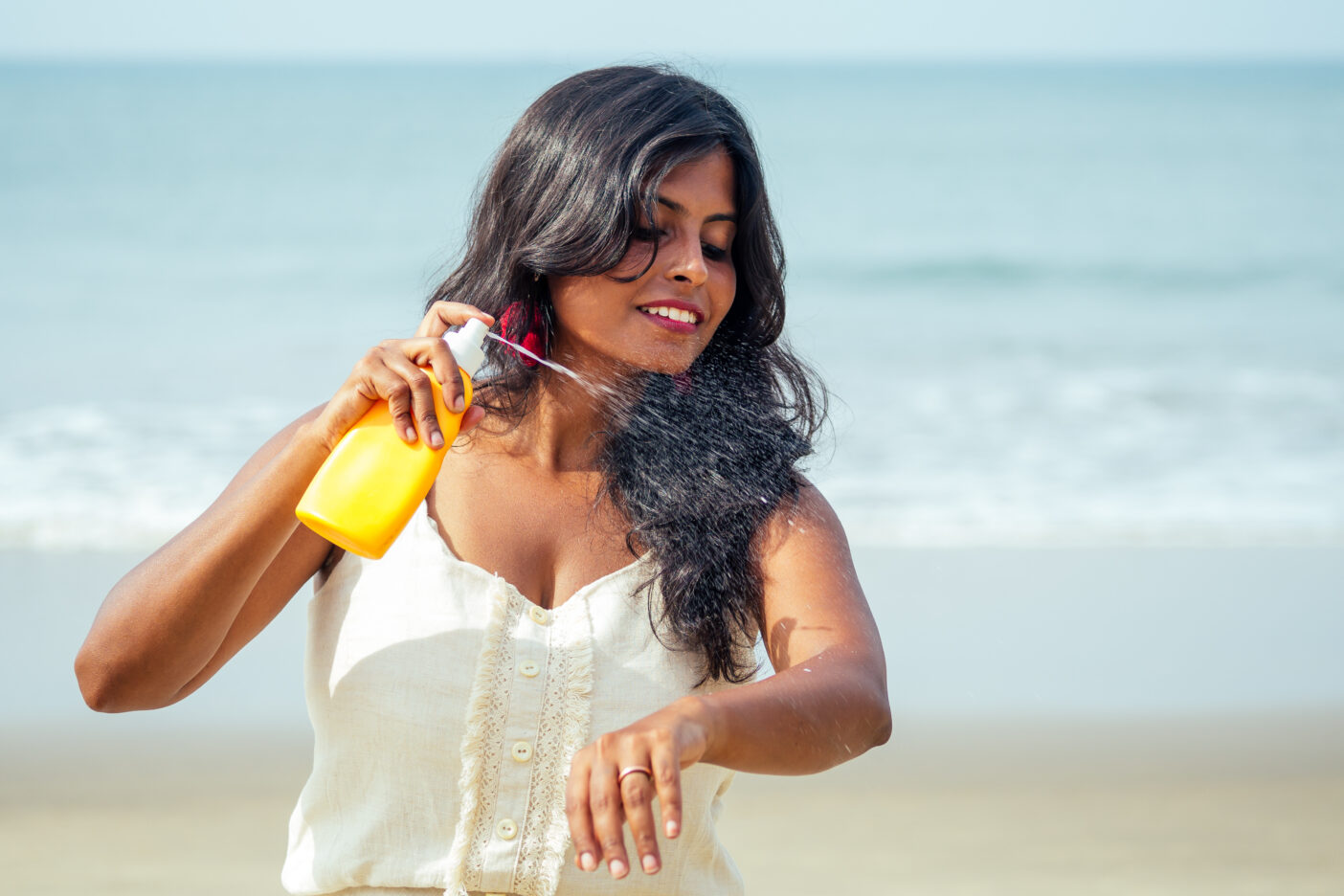UV protection for hair: why it’s so important and how to use it properly

As soon as the sun comes out, many people automatically reach for sunscreen to protect their skin. But what is often overlooked is that our hair and scalp are also exposed to harmful UV rays. UV rays can cause lasting damage to the hair structure. That’s why UV protection for your hair is an essential part of your summer care routine.
The sun: an invisible enemy for your hair
UV radiation can damage your hair just as badly as chemical treatments. It destroys keratin bonds inside the hair, leaving it porous, dry and brittle. Coloured or bleached hair is particularly susceptible: the colour fades more quickly, the hair loses its shine and appears dull. In intense sunlight, even the scalp can burn – a risk that many people underestimate.
Why classic hair care products are not enough
A common misconception is that shampoos and conditioners with built-in sun protection provide sufficient protection for the hair. In fact, however, these products are rinsed out and the UV filters they contain are almost completely removed from the hair along with the water. Even if small amounts remain on the hair, the protective effect is minimal and not long-lasting. Even products that remain in the hair, such as leave-in conditioners or styling creams, offer limited protection. This is because the heat from blow-drying, straightening or curling can weaken the effectiveness of UV filters or even remove them completely from the hair shaft.
The most effective methods for real UV protection for hair
Effective UV protection for hair is based on a multi-step approach. The simplest and most effective protection is a head covering. Hats, scarves or caps provide reliable shade for the scalp and hairline, reducing direct sunlight.
If you don’t want to wear a hat, you can opt for a clever hairstyle. A hairstyle without a centre parting protects the sensitive scalp in particular. Updos or braids are also recommended as they reduce the surface area of the hair exposed to the sun.
In addition, special leave-in products with UV filters are recommended. These sprays or creams remain in the hair and form a thin protective film that can reflect or absorb UV rays. Although the effect is limited, in combination with other measures it is sufficient to protect the hair from drying out and fading. Regular use is important, especially after swimming or exposure to intense heat.
Special products for the scalp are also a useful addition. They contain light sun protection factors and thus prevent the sensitive skin on the parting from burning. Their textures are usually transparent and non-sticky, making them pleasant to use without affecting styling.
The role of plant-based active ingredients
In addition to chemical UV filters, plant-based ingredients can also contribute to hair care in summer. Extracts from aloe vera or oak bark, for example, are known to moisturise and make hair more resistant. Although they do not offer complete protection against UV radiation, they have a supportive effect by reducing oxidative damage caused by free radicals and promoting hair regeneration.
Challenges in developing UV protection products for hair
A major challenge in formulating UV protection products for hair is the poor adhesion of UV filters to the hair. While they adhere very well to the skin, they are easily removed from the hair, especially when exposed to moisture or sweat. In addition, many people find formulations that adhere well to be heavy or greasy, which impairs the hairstyling properties.
Another problem is the water solubility of many UV filters. When the hair is washed or moistened by sweat or sea water, the active ingredients are quickly lost. Waterproof formulations for hair therefore remain a key focus of cosmetic research.
This is what modern UV protection for hair can look like.
Modern UV protection for hair should combine several properties: it should be easy to apply, non-greasy and heat-resistant. At the same time, it must adhere reliably to the hair shaft without affecting styling. Innovative film-forming substances that reflect UV rays and care for the hair at the same time are particularly promising here.
Transparent sprays or light fluids with a high sun protection factor are suitable for the scalp. They prevent sunburn on the parting without weighing the hair down. Combinations of UV protection and moisturising care, for example with plant extracts, also offer a holistic protection approach for sunny days.
Conclusion: UV protection for hair is more than just a summer issue.
UV protection for hair is not a luxury, but a necessity – especially in the sun-intensive months. Only a well-thought-out mix of physical protection, suitable hair care and innovative formulations can protect hair from permanent damage. While classic hair care products often reach their limits here, modern leave-in solutions and scalp products offer a practical alternative.
The development of effective and user-friendly products with long-lasting UV protection for hair not only improves hair quality in the long term, but also creates a strong brand advantage. High-quality formulas that combine care, protection and a pleasant application experience are the key to modern hair care – and not just in summer.
Take action now: integrate UV protection for hair into your product line.
Would you like to expand your own hair care line with effective UV protection for hair? Then get in touch with us!
Together with our experienced partner company, Tojo Cosmetics GmbH, we offer you not only individual development services, but also fast and uncomplicated implementation via private label solutions. This allows you to supplement existing ranges in a targeted manner or launch new products quickly and marketably – with tailor-made formulations that strengthen your brand and precisely meet the needs of your customers. We would be happy to advise you personally and work with you to develop effective solutions for modern UV protection for hair.